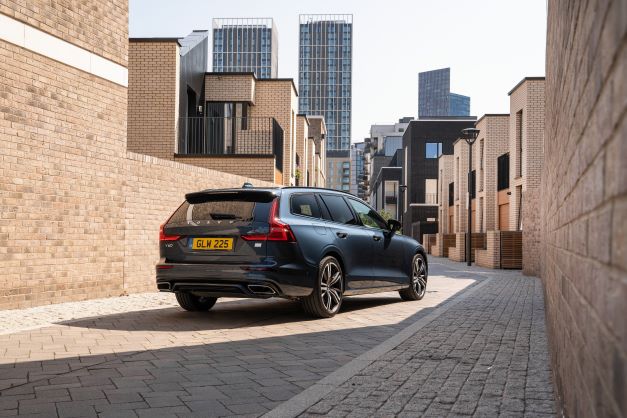
Inside story
The instrument cluster springs to life as you enter, displaying all the usual and critical driver information. Built-in light sensors control the brightness of the display that adjusts to exterior lighting conditions. Positioned on a central satin chrome stack of the uncomplicated dash is a single rotary jewel-like knob beneath a large feature-packed nine-inch portrait-oriented infotainment touchscreen.
Although new cars with minimalist cockpits are becoming increasingly common not just on Volvos but across the board, some of us still prefer to adjust the HVAC using old-fashioned dials while keeping our eyes on the road. You can use voice control to adjust the fan speed though and certain other features, however.
The touchscreen is flanked by a pair of vertical chrome air vents. These have a silver central section – for directing the flow of air – that appears to ‘float’ in the middle of the vent. This is adjusted via a diamond-cut rotary control knob, which is also seen in Volvo’s 40 and 90 series cars.
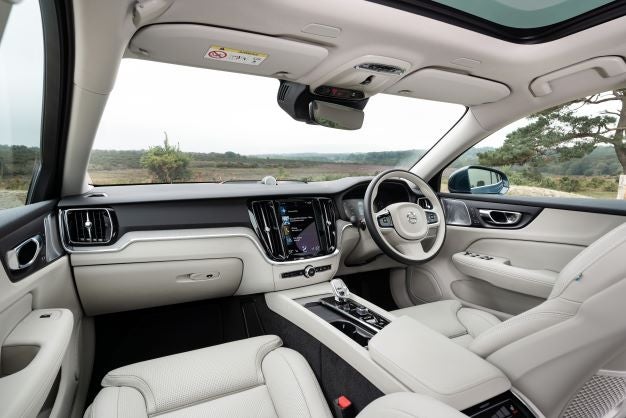
We have often found that the steering wheel controls on Volvo models are particularly intuitive. The V60 is no exception. The left-hand spoke offers control of driving-function related systems such as speed limiter, adaptive cruise control and so on. The right-hand spoke accesses all the crisp infotainment features, including audio, phone and navigation. The twist-and-go engine start mounted on the tunnel console was a joy to use.
The heated and powered snug black Nappa leather front seats, panoramic roof and plush interior trim add to the car’s dark and moody ambience. Premium features include rearview camera, front and rear parking sensors, heated steering wheel and a 14-speaker Bowers and Wilkins surround sound system.

US Tariffs are shifting - will you react or anticipate?
Don’t let policy changes catch you off guard. Stay proactive with real-time data and expert analysis.
By GlobalDataIn the back, the V60 comes with two-stage integrated child booster cushions that pop up from the seat base. The heated rear seats can be flipped forward, providing 1,441 litres of load space. The tapered, panoramic roofline flowing to the powered tailgate, however, reduces headroom for tall rear seat passengers.
While the sloping roofline distinguishes this estate from others, it further compromises the boot space somewhat with squashed sides and roof. The broad front grille – with prominent chrome logo and subtle creases – and the carmaker’s hallmark vertical rear lighting cluster mark this car out as unmistakeably Volvo, day or night.
Storage-wise, the V60 has plenty of sizeable fuzzy felt-lined cubbies with two cup holders in the front and rear. We also like the attention to detail. For example, the storage bins are fitted with soft close lids and the sides of the centre console are lined with carpet so you won’t graze your knuckles as you buckle up your seat belt.
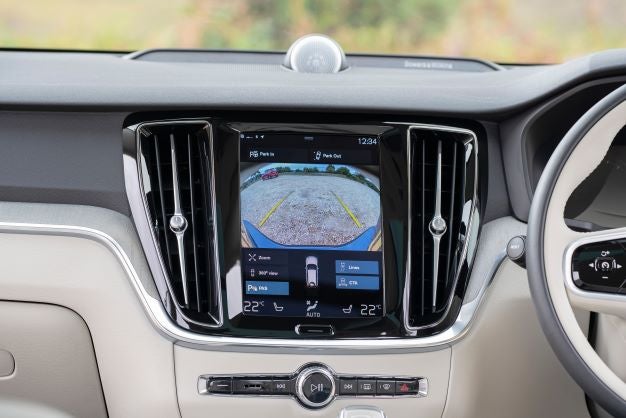
Connectivity
Incorporated across the Volvo range is its so-called Sensus Connect. This cloud-based service allows the driver to find and pay for parking from the car, find a restaurant, stream favourite music and a few more things besides. The driver can also have text messages read out loud without removing their hands from the wheel. Also falling under the auspices of Sensus Connect is Volvo On Call which allows drivers to communicate directly with their car via a smartphone application to lock, unlock, check fuel levels, and locate and check the mileage on the car. It also enables the motorist to download trip information for the past 100 days, useful for business users claiming fuel expenses. The Sensus Connect infotainment system is compatible with Apple CarPlay, Android Auto and 4G standard.
As part of Volvo’s Sensus technology, In-car delivery is a new service that allows online orders to be delivered directly to the boot of any Volvo. Using the carmaker’s On Call service, In-car delivery allows single-time access for depositing items such as groceries or dry-cleaning in the boot of a parked car. It essentially turns a car into a preferred delivery address. You can also send a destination directly to the car’s sat-nav so it’s all ready to go when you get into the car.
Since April 2022, all new Volvo car models are now available with over-the-air (OTA) software update capability. The OTA capability now comes to the V60 as well as XC90 and S60 models and follows the technology’s initial introduction on Volvo Cars’ fully electric cars. This means that the company’s full portfolio can now receive an update of the car’s complete operating system over the air. Volvo owners have seen their infotainment upgraded to a newer version of Android Automotive OS, Android 11 with the OTA update. They have also received access to new app categories on Google Play, including navigation, charging and parking. The latest OTA update brings feature improvements, ranging from better energy management through improved climate timers and updates to mobile app functionality and in-car applications.
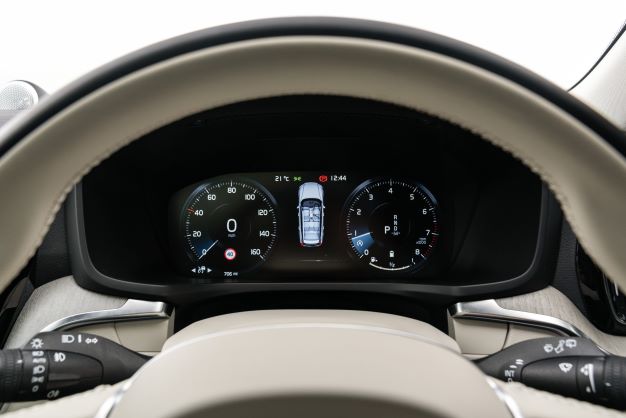
Advanced driver assistance systems
As we would expect from safety-loving Volvo, the V60 comes loaded with high-tech semi-autonomous and connected car features most of which are displayed and controlled on an intuitive and responsive touchscreen.
The V60 includes advanced driver support systems used on the 90 Series and XC60. ADAS technologies include City Safety with Autobrake technology that uses automatic braking and detection systems to assist the driver in avoiding potential collisions. This system is notable as it is currently the only one of its kind to recognise pedestrians, cyclists and large animals. Both the S60 sedan and V60 estate have received a five-star rating in the 2018 EuroNCAP safety tests, with very good category scores throughout. But there again, we would expect nothing less from Volvo.
The Pilot Assist system – which supports the driver with steering, acceleration and braking on well-marked roads up to 130km/h – has been upgraded with improved cornering performance. The V60 also includes run-off road mitigation and oncoming lane mitigation. The latter automatically provides steering assistance if you unwittingly drift out of your lane, guiding you back into your lane and out of the path of any oncoming vehicles.
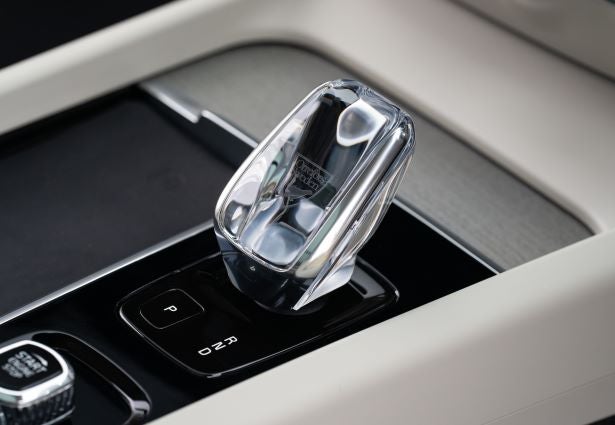
On the road
Seated for long and winding journeys in the estate felt quite comfortable surrounded by a commanding cockpit. Its uncomplicated, clean and classy cabin swathed with soft-touch trim and plush leather seats make this a snug place to sit for a few hours. On balance, the latest generation V60 remains a solid, safe and sensible family choice, bristling with appealing spec. Although it doesn’t yet drive itself, the Pilot Assist goes some way to support this aim.
Best-seller
Geely’s Volvo Cars sold 44,664 cars in July 2022, down 21.5 per cent compared to the same month last year. More specifically, the XC60 remained the best-selling model period, followed by the XC40 at 156,920 (2020: 121,905) and the XC90 with 80,402 (2020: 61,327). July sales continued to be affected by supply constraints being carried over from previous months due to Covid-related lockdowns in China. This particularly affected retail deliveries of Recharge cars during the month and is expected to continue to affect the company’s retail sales into the current quarter. Recharge cars accounted for 21.5 per cent of sales in July. The share of fully electric vehicles stood at 3.5 per cent. For the full year 2022, the target remains of having a double-digit share of fully electric cars.
